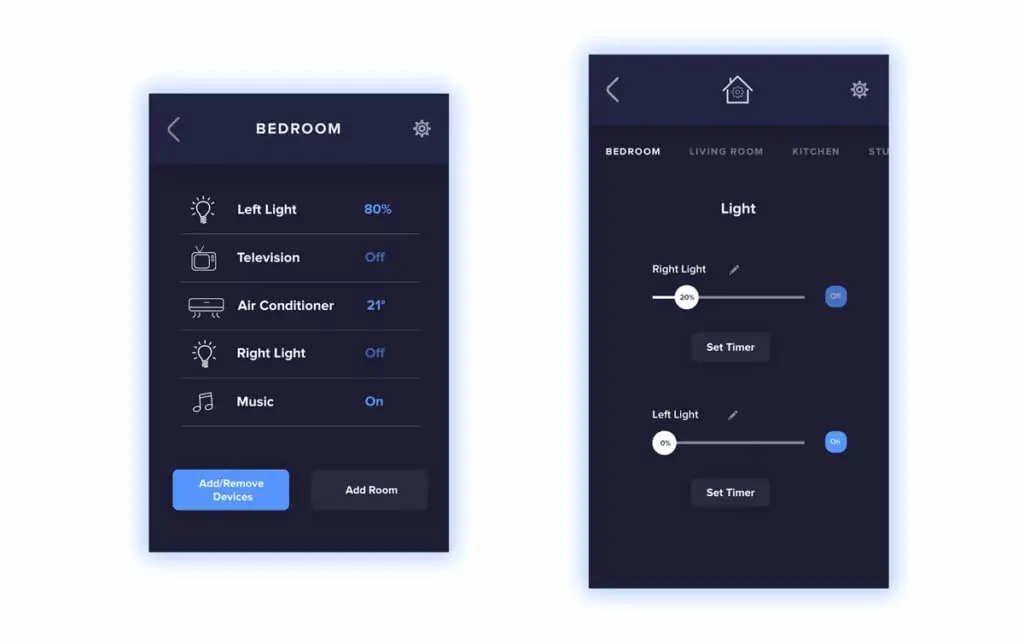The Immense Value of Good UX Design
User experience (UX) design has become one of the most crucial elements of product development and business success in the digital age. With consumers now interacting with brands and companies primarily through websites, apps, and other digital touchpoints, having a polished and intuitive user experience is no longer just a “nice-to-have” but an absolute necessity.
In 2024, consumers will have higher expectations for usability and design. They want products, services, and digital experiences that are effortless to use and aesthetically pleasing. Meeting these user expectations is challenging, but the payoff for getting UX right is enormous.
Table of Contents
Why UX Design Matters More Than Ever

Just think about how much time the average consumer spends using apps and browsing the internet daily. We are more dependent on digital technology than ever before in human history. That makes the user experience critical for brands hoping to attract and retain customers in a highly competitive marketplace.
Here are some key reasons why UX design matters now more than ever:
Digital Experience Is the Primary Customer Touchpoint
Gone are the days when in-person interactions dominated the customer journey. Today, most brand discoveries and purchases happen online. Whether browsing products on an ecommerce site, downloading an app, or contacting customer service through live chat, digital touchpoints shape consumer perceptions. If these digital experiences fall short, customers will go elsewhere.
Customer Expectations Are Higher Than Ever
After using slick apps and sites like Instagram and Apple, consumers expect all their digital experiences to be intuitive, frictionless, and aesthetically appealing. They will quickly abandon apps and websites that need clarification updating or are frustrating to navigate. UX design is what separates digital leaders from the laggards.
Competition Is Fierce
Standing out in the competition takes much work. Brand loyalty has declined as customers take advantage of expanded choices. For example, 80% of consumers will purchase impulsively if an alternative grabs their attention at the right time. Well-designed digital experiences can help brands differentiate, delight customers, and earn loyalty.
UX Influences Brand Perception
How your brand's digital interfaces look and function significantly impacts the brand image. Think about the different perceptions created by using Netflix versus a cheap knockoff streaming site. Successful UX design demonstrates that your brand is modern, thoughtful, and focused on customer needs.
Poor UX Means Lost Customers
When customers have a terrible user experience, they remember. One survey found that 74% of consumers say a bad experience makes them less likely to use that company again. Problems like site crashes, confusing navigation, lack of mobile optimisation, and ineffective search cause users to leave. Excellent UX design keeps them coming back.
The Many Benefits of Investing in UX

Given today's digital-first business environment, UX design can no longer be an afterthought. It must be a top priority for any brand serious about success. When properly implemented, UX design provides numerous concrete benefits:
Increased Conversation Rates
Whether signing up users, getting email subscribers, selling products, or scheduling appointments, the user interface facilitates or hinders conversions. Good UX removes friction from desired actions. For example, HubSpot increased free trial sign-ups by 90% after a UX redesign.
Improved User Retention
Retaining customers costs a lot less than acquiring new ones. UX improvements help increase the lifetime value of each user by making the product or service more relevant, easier to use, and enjoyable over time. Amazon built its empire by obsessively refining UX to keep users coming back.
Higher Quality Traffic
Better UX leads to more engaged and loyal users who spend more time on your site or app. This signals high-quality content to search engines, resulting in better rankings. For example, for every one-second improvement in load time, Amazon increased conversions by 2%.
Stronger Brand Positioning
A polished digital experience shapes brand perceptions by signalling that you are a market leader, not a commodity player. For example, challenger brands like Warby Parker successfully took on incumbents by focusing on better UX and branding.
Improved SEO
Designing a user-friendly site architecture and navigation has direct SEO benefits. Google wants to send users to sites that satisfy their query intent. Easy-to-use sites provide a better user experience, earning higher rankings.
Increased Innovation
UX design requires thoroughly researching user psychology and behaviour—many innovations and new product ideas spring from UX findings. For example, digital wallet payments emerged from shopper preference for one-click checkouts.
Future-Proofing
User expectations and technology constantly evolve. UX research and testing reveal changing user needs so you can adapt quickly. For example, UX designers recognised the shift to mobile before many companies, allowing responsive sites to dominate.
Operational Efficiencies
Frustrating UX often indicates more complex underlying issues. Poorly designed interfaces can result from fragmented data, overly complex codebases, or inefficient workflows. Improving UX requires streamlining processes.
Compliance & Accessibility
Regulations like ADA compliance require digital properties to meet accessibility standards. UX design considers how those with disabilities use sites and ensures they have equal access.
Making UX Design a Priority
Given the immense benefits, UX design must become a top priority woven into product development and company culture. Here are the best practices for championing UX:
Adopt a User-Centric Mindset
The #1 rule is to understand end users and design for their needs deeply. This requires user research, testing, and empathy. Every decision should tie back to making the user experience better.
Involve UX Early & Continuously
UX insights are most valuable when gathered early and incorporated throughout development cycles. Successful products are designed collaboratively by UX experts, engineers, product managers, and other stakeholders.
Invest in UX Testing
Don't assume you know how users will respond. Different types of live user testing (moderated, unmoderated, remote, lab-based) across key user segments ensure you optimise the right experiences.
Make UX Part of the Company's Culture
UX can't just be the domain of designers. Entire companies must buy into its importance. Allow every employee to interact with users and share insights. Include UX in training programs.
Fill Skill Gaps
Hiring, training, and reskilling help build strong UX capabilities. Recruit researchers, designers, content strategists, and prototypers who complement your current team.
Choose the Right UX Metrics
Measure what matters most to your business goals, including conversion rates, completion rates, task times, sentiment, or Net Promoter Score. Quantify the impact of UX changes.
Listen to Customers
User research provides structured UX insights and gathers feedback through surveys, support calls, social media, and reviews. Track complaints to identify pain points.
Upgrade Legacy Systems
Improving old tools built on outdated tech limits UX innovation. While challenging, rebuilding on modern tech stacks enables responsive, personalised experiences users want.
Prioritise UX for Critical Journeys
Map essential user journeys end-to-end, then identify and fix pain points. Focus on high-value actions like signing up, onboarding, and purchases.
UX Audit Existing Platforms
Conducting regular expert audits of UX identifies areas for improvement. Review user flows, information architecture, search, forms, and visual design for enhancements.
UX Design Best Practices

Now that you appreciate the immense value of UX design for digital business results and customer satisfaction let's get specific on best practices for executing UX successfully:
#1: User Research
Ongoing user research uncovers changing needs, pain points, and behaviour patterns. Methodologies like interviews, surveys, benchmarking, and usability testing provide insights to guide designs.
#2: Information Architecture
Structuring, organising, and labelling content and functions so users can intuitively navigate to find what they need is critical. Top UX reflects mental models.
#3: Interaction Design
Crafting engaging interfaces and seamless interactions from initial discovery to task completion reduces complexity and creates delight.
#4: Usability Testing
Watching representative users attempt essential tasks identifies usability issues. Small qualitative tests offer more powerful insights than large samples.
#5: Personas
Archetypes representing key audience segments, goals, and needs humanise design decisions and focus solutions. Personas based on accurate data beat generic ones.
#6: Customer Journey Mapping
Step-by-step visualisation of significant customer journeys illuminates pain points and prioritises redesign efforts for strategic impact.
#7: Wireframes
Simple page layout sketches explore the structure, content flow, and requirements before visual design. Rapid prototyping in wireframes is highly iterative.
#8: Visual & Interface Design
Visual hierarchies, layouts, typography, colour schemes, and branding create aesthetically pleasing and purposeful designs.
#9: Conversion Optimisation
Design and test variations on crucial pages to continuously improve conversion rates. Changes may involve copy, layout, images, or calls to action.
#10: Accessibility
Ensure all users can perceive, understand, navigate, interact with, and contribute to your product or service. Meet established accessibility guidelines.
#11: Responsive Mobile Design
With mobile usage dominating, UX must flex seamlessly across device types and screen sizes: Mobile-first and progressive enhancement approaches.
#12: Usability Testing
Iteratively testing with real users identifies the best design patterns. Problems and improvements surface quickly via rapid testing.
#13: User-Centred Copy
Conversational, friendly, and concise copy focused on user needs improves engagement. Avoid generic, business-focused jargon.
#14: Personalisation
Tailoring UX to individuals' preferences and context boosts satisfaction and loyalty. Balance personalisation with privacy.
#15: Data-Informed Design Decisions
Analytics provide quantitative insights on behaviour to balance qualitative user feedback. KPI dashboards highlight areas for optimisation.
UX Design Delivers Tangible Returns
Here are some statistics that demonstrate the measurable returns robust UX design delivers:
- Good UX design can generate conversion rate improvements of 200% or more
- Every $1 invested in UX brings $100 in return, according to some estimates
- Top UX can increase mobile ecommerce conversion rates by up to 400%
- UX improvements increased annual revenues at IBM by over $500 million
- Easy-to-use UX increases the perceived value of products by up to 148%
- A compelling visual hierarchy draws users in and helps them engage 235% more
- Consistent UX across devices boosts brand loyalty 87% more than inconsistent experiences
- 75% of users admit to making judgments on a company's credibility based on website design
- Good UX design can lift customer lifetime value by up to 370%
UX Mistakes to Avoid

On the flip side, poor UX has dire consequences. Here are some common UX pitfalls and mistakes to avoid:
- Not doing user research and testing regularly
- Leaving UX as an afterthought until late in development
- Failing to iterate based on user feedback and analytics
- Thinking you understand users without objective data
- Focusing on aesthetics over utility and usability
- Overloading pages with too much information
- Using dark patterns and tricks to drive business goals over user experience
- Not having clear information architecture and intuitive navigation
- Ignoring accessibility and mobile-first design principles
- Inconsistent experiences across touchpoints and channels
- Copy that is tone-deaf to user needs. Too formal or business-centric.
- Not having measurable UX and customer experience (CX) benchmarks
- Failing to optimise based on user data and testing continuously
Turning UX into Your Competitive Advantage
In today's experience-driven economy, UX is far more than a supporting capability. It must be a core competency and competitive advantage. By championing user-centricity across your digital experiences, you gain loyal customers who become advocates for your brand.
But beware — UX requires more than hiring some designers and researchers. It takes complete organisational commitment, prioritisation, and continuous refinement powered by market insights and testing. Cross-functional teams can consistently deliver experiences that create value, meaning, and delight when aligned around the end user.
Frequently Asked Questions About UX Design
Here are answers to common questions people have about improving user experience (UX) design:
How much does good UX design cost?
Good UX design does require an upfront investment. But those costs pay for themselves often when you consider results like higher conversion rates and customer lifetime value. Dedicate at least 10% of product budgets to UX.
How long does UX design take?
Effective UX follows agile, iterative approaches. But for a typical digital product, plan at least a few months end-to-end for research, testing, prototyping, and visual design. Build in more time for iterating and optimisations after launch.
What tools do UX designers use?
Essential tools include research utilities like Optimal Workshop, design apps like Figma and Sketch, prototyping tools like InVision, data analytics platforms, and task management systems like Jira.
How much do UX designers make?
UX designer salaries range widely based on experience, industry, and location. In the US, the average is $95,000. Senior UX designers can make $130,000-$185,000 or more at top tech firms or agencies.
Where can I learn UX design?
Many certification boot camps and online programs now teach UX skills affordably. Look for programs that emphasise hands-on activities over lectures. Many UX designers start in related fields like HCI, psychology, anthropology, graphic design, or marketing.
Conclusion: UX as a Key Strategic Priority
In today's digital world, the user experience makes or breaks your brand's success. Seamless, satisfying customer journeys are essential to earning trust and loyalty across every interaction.
You can create unmatched value by championing user-centric design, conducting rigorous UX research, prototyping new experiences, and continuously optimising. Earning a reputation for best-in-class UX builds competitive barriers and strategic advantage.
But UX is more than just the domain of specialist designers. The entire organisation must embrace user experience as a culture and mindset. When CX becomes a shared priority, you unlock innovation and consistently exceed customer expectations.
The investment required to achieve UX leadership is substantial. But the cost of lagging behind users' needs and expectations is far steeper. In an experience economy, brands fade into commoditised obscurity without competitive UX capabilities across the customer journey.
Make UX a strategic pillar. Continuously test and optimise digital touchpoints. And fill any skill gaps required to transform customer experiences. You can thrive amid rising customer expectations and ever-fiercer competition by delivering seamless, personalised, and emotionally resonant UX. The future belongs to brands that design for humans first.
